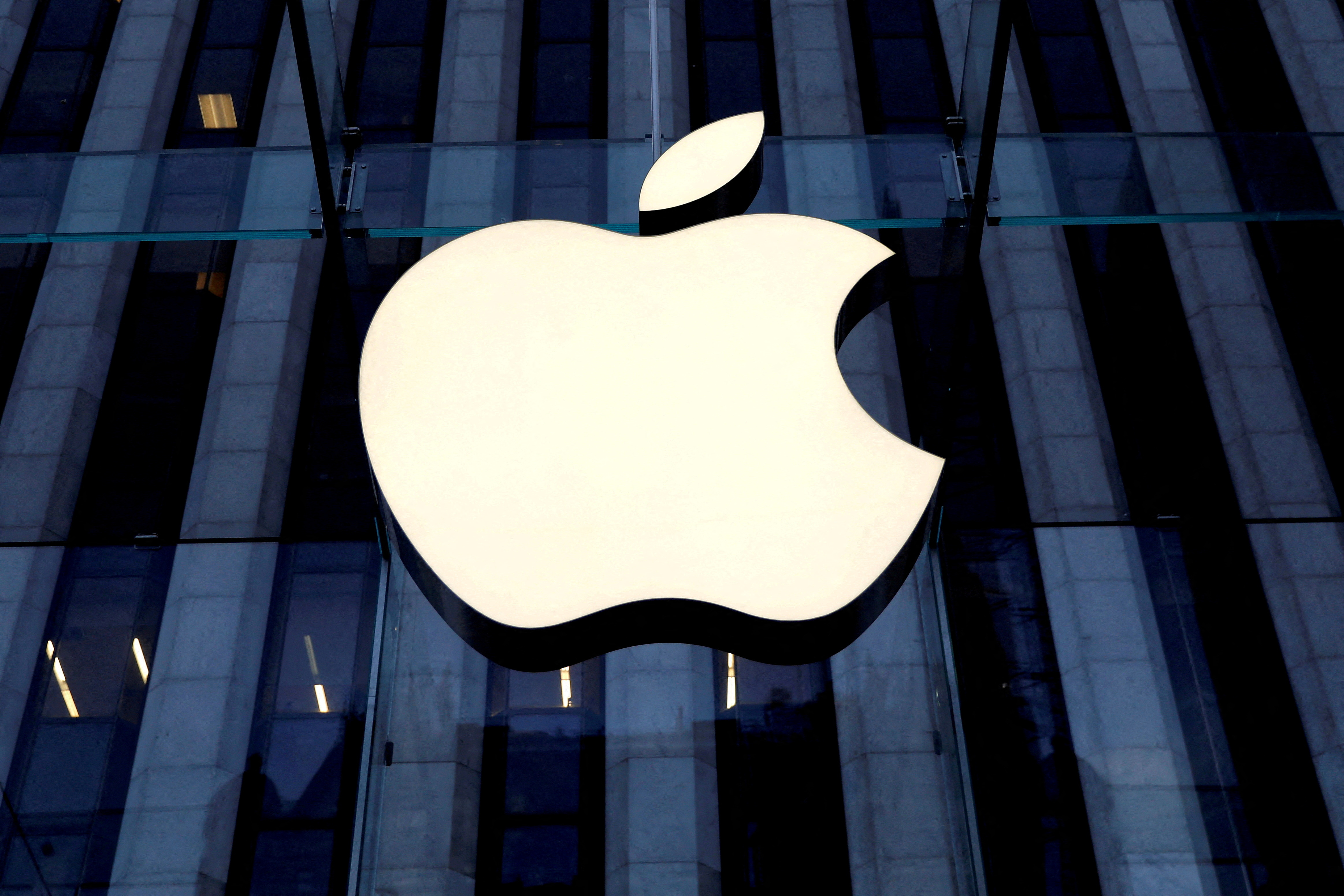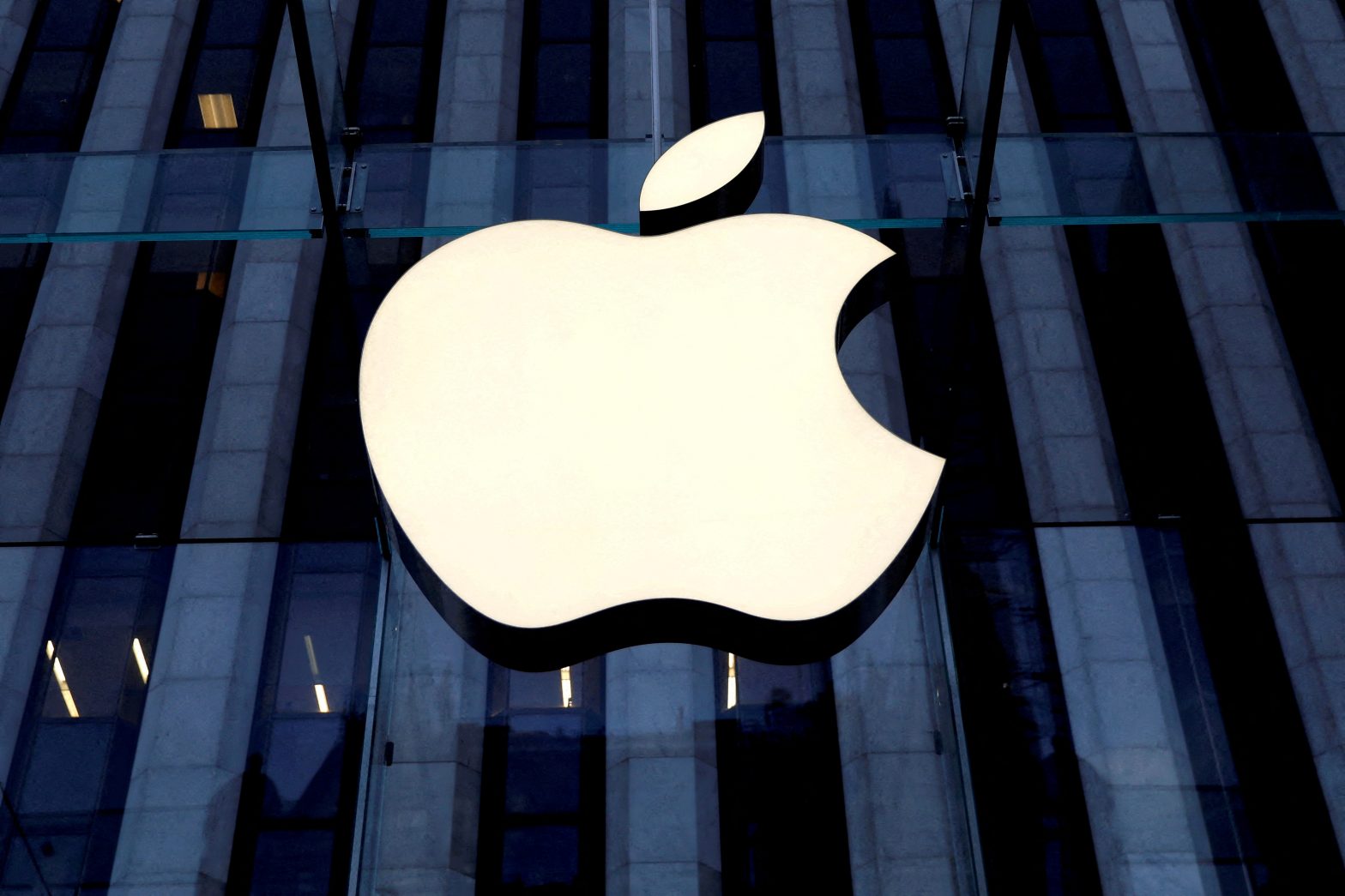
The Apple Inc. logo is seen hanging at the entrance to the Apple store on 5th Avenue in Manhattan, New York, U.S., October 16, 2019. REUTERS/Mike Segar/File Photo Acquire Licensing Rights
Nov 2 (Reuters) – Apple’s (AAPL.O) quarterly sales and profit beat Wall Street expectations on Thursday, helped by an uptick in iPhone sales and a $1 billion boost to services revenue that offset large drops in Mac and iPad sales.
But revenue from China dipped 2.5% and Chief Executive Tim Cook said the company’s new high-end handset models – the iPhone 15 Pro and Pro Max devices – are facing supply constraints.
Apple shares, which have risen 37% so far this year, dipped 1% after-hours, after closing the regular session up 2%.
The Cupertino, California, company has navigated a global smartphone slump better than many of its rivals but faces an uneven economic recovery in China, a key market for Apple.
“While we believe investors should breathe a sigh of relief because sales and profits both exceeded expectations, the upside was small and we were concerned to see weak sales from China,” DA Davidson analyst Tom Forte said.
Apple said sales for the fiscal fourth quarter ended Sept. 30 fell roughly 1% to $89.50 billion but beat analyst estimates of $89.28 billion, according to LSEG data. Net income rose about 11%. Profit per share of $1.46 beat analyst expectations of $1.39 per share, according to LSEG.
The results do not include the bulk of sales from Apple’s newest iPhone 15 models. Analysts and investors will be closely watching a conference call scheduled for 5 p.m. EDT (2100 GMT) during which executives will give an outlook for the company’s all-important holiday sales quarter, historically the most important for the new devices.
Apple is facing tougher competition in the smartphone market this year as Huawei Technologies (HWT.UL) returns to the field with new phones powered by Chinese-made chips after being all but shut out of the market for several years by U.S. government trade curbs.
Apple’s sales in China fell to $15.08 billion from $15.47 billion in the fourth quarter a year ago. Apple’s Cook said that after accounting for foreign exchange rates, Apple’s business in China grew year-over-year, driven by iPhone sales and services revenue.
“In mainland China, we set a quarterly record for the September quarter for iPhone,” Cook told Reuters. “We had four out of the top five best-selling smartphones in urban China.”
Cook said Apple was “working hard to manufacture more” iPhone 15 Pro and Pro Max devices. “We do believe that later this quarter, we’ll reach a supply-demand balance,” he said.
Several global trends are also playing in Apple’s favor, with forecasters predicting that the smartphone market has bottomed out and may start to recover in 2024.
In the longer term, investors are eying how Apple responds to the boom in generative artificial intelligence in which systems can follow prompts in human-like ways – an area that has attracted billions in spending by Microsoft (MSFT.O) and Alphabet’s (GOOGL.O) Google. Apple has said it is working on the technology and views it as a way to improve a wide range of products.
For now, the iPhone remains Apple’s biggest seller. Sales of the device were $43.81 billion in the fourth quarter, in line with analyst expectations of $43.81 billion, according to LSEG data.
The personal computer market is also expected to fare better in the coming year. Earlier this week, Apple rolled out new Mac machines.
Still, Mac sales slumped by a third to $7.61 billion and iPad sales declined 10% to $6.44 billion, compared with expectations of $8.63 billion and $6.07 billion, respectively.
Sales in Apple’s wearables segment, which includes the Apple Watch and AirPods, fell 3% to $9.32 billion, short of estimates of $9.43 billion, according to LSEG data.
Apple has faced several quarters of declining sales of Macs and iPads, and the fourth quarter continued that trend.
Sales in Apple’s services segment, which includes Apple TV+ and which recently closed a deal with global soccer superstar Lionel Messi, rose 16% to $22.31 billion, compared with analyst estimates of $21.35 billion.
Reporting by Stephen Nellis in San Francisco and Yuvraj Malik in Bengaluru
Editing by Sayantani Ghosh, Peter Henderson and Matthew Lewis
Our Standards: The Thomson Reuters Trust Principles.
